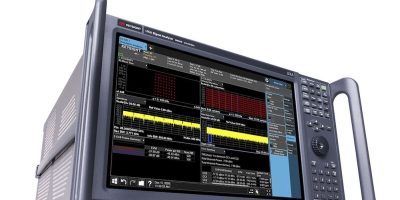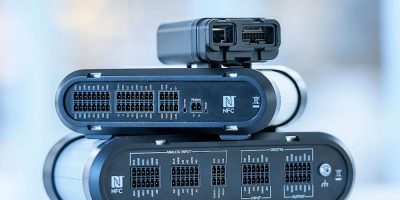A software-based, real time spectrum analyser developed by Keysight, monitors satellite signals and interference. It supports industry-leading wide bandwidth analysis up to 2GHz, reduces analysis time, and improves probability of intercept, said Keysight Technologies. It also speeds design and testing of satellite payloads, lowers prototyping costs, and accelerates time-to-market through digital twins technology, added the company.
The N9042B UXA signal analyser is a 2GHz real time spectrum analysis (RTSA) instrument. The software-based analyser monitors satellite signals and interference, allowing satellite network operators to provide the highest quality of service (QoS) to users.
As the satellite communications (satcom) industry moves to high throughput satellites, satellite network operators are experiencing increased satellite signals and interference. Signal interference has been further complicated for satellite operators with the auction of traditional satcom frequency bands to terrestrial wireless operators. To ensure high QoS, satellite operators need to perform rigorous and accurate signal interference monitoring in real-time to identify anomalies and mitigate service degradation.
Keysight’s RTSA addresses this challenge by enabling the N9042B UXA signal analyser to conduct continuous, gapless capture and analysis of elusive and transient signals with industry-leading optical data interface (ODI) streaming up to 2GHz.
According to Keysight, benefits include reduced analysis time through Keysight’s advanced FPGA technology which enables a multi-threaded and parallelised RTSA measurement up to 2GHz bandwidth to minimise the time gap between processing / rendering and re-capturing signals. This reduces analysis time and improves the probability of intercept.
Support for ODI streaming at up to 2 GHz to RAID storage enables rapid, wide bandwidth streaming and capture of hours of signal recordings for analysis.
Keysight’s design and emulation has been used to for using digital twins that speed design and testing of satellite payloads, lower prototyping costs, and speed time-to-market.
The RTSA software is designed to run on the N9042B UXA signal analyser which tests mmWave performance in 5G, satellite, and radar. When combined with the V3050A frequency extender for unbanded frequency coverage to 110GHz, the U9361 RCal receiver calibrator, the M9484B VXG signal generator, and the powerful PathWave X-Series and PathWave vector signal analysis measurement applications, the N9042B UXA provides real-time spectrum analysis bandwidth to 2GHz and streaming bandwidth to 2GHz for satellite communication systems.
Keysight showcased the real time spectrum monitoring capabilities of the Keysight RTSA test solution at Satellite 2023 (13 to 16 March) at the Walter E. Washington Convention Centre in Washington, DC, USA – Hall A & B, booth 1520.
http://www.keysight.com






